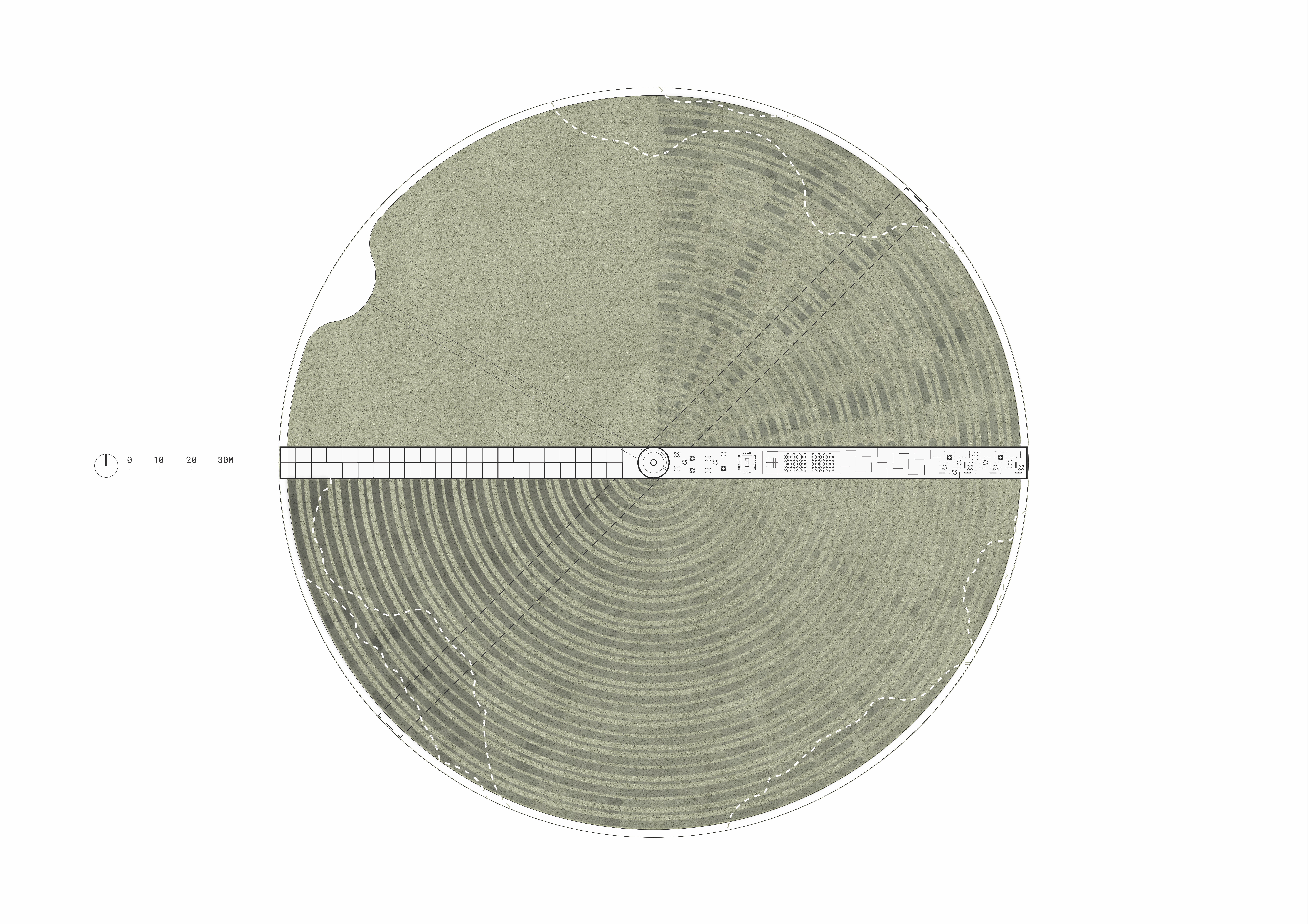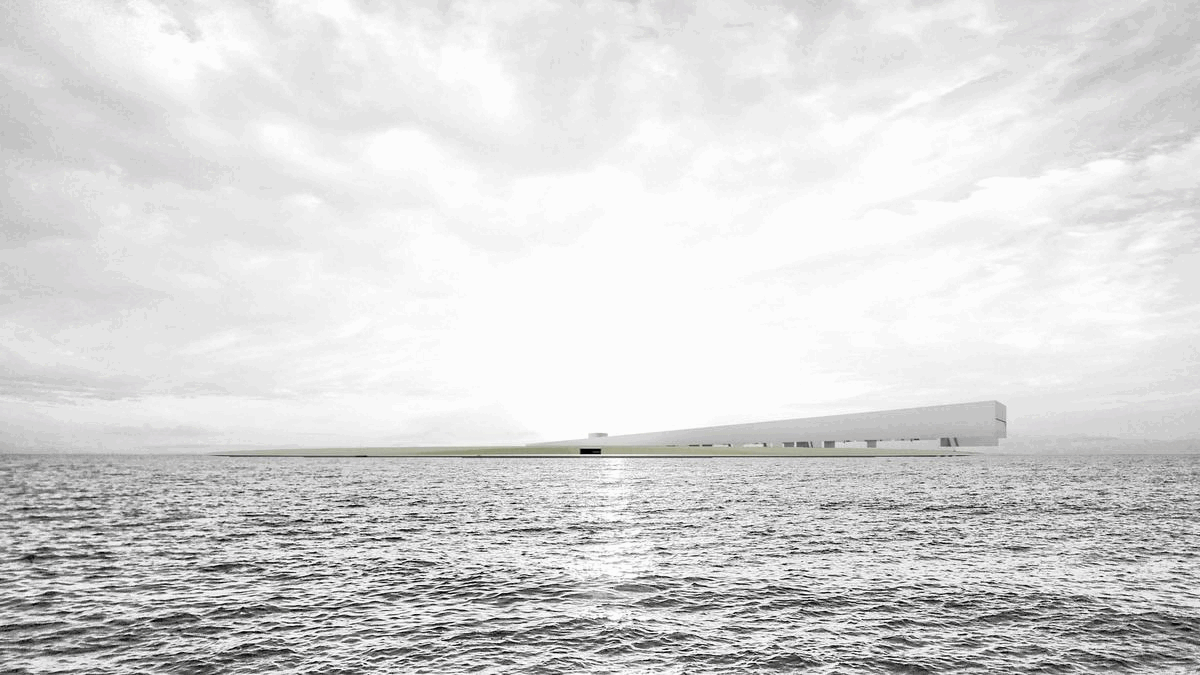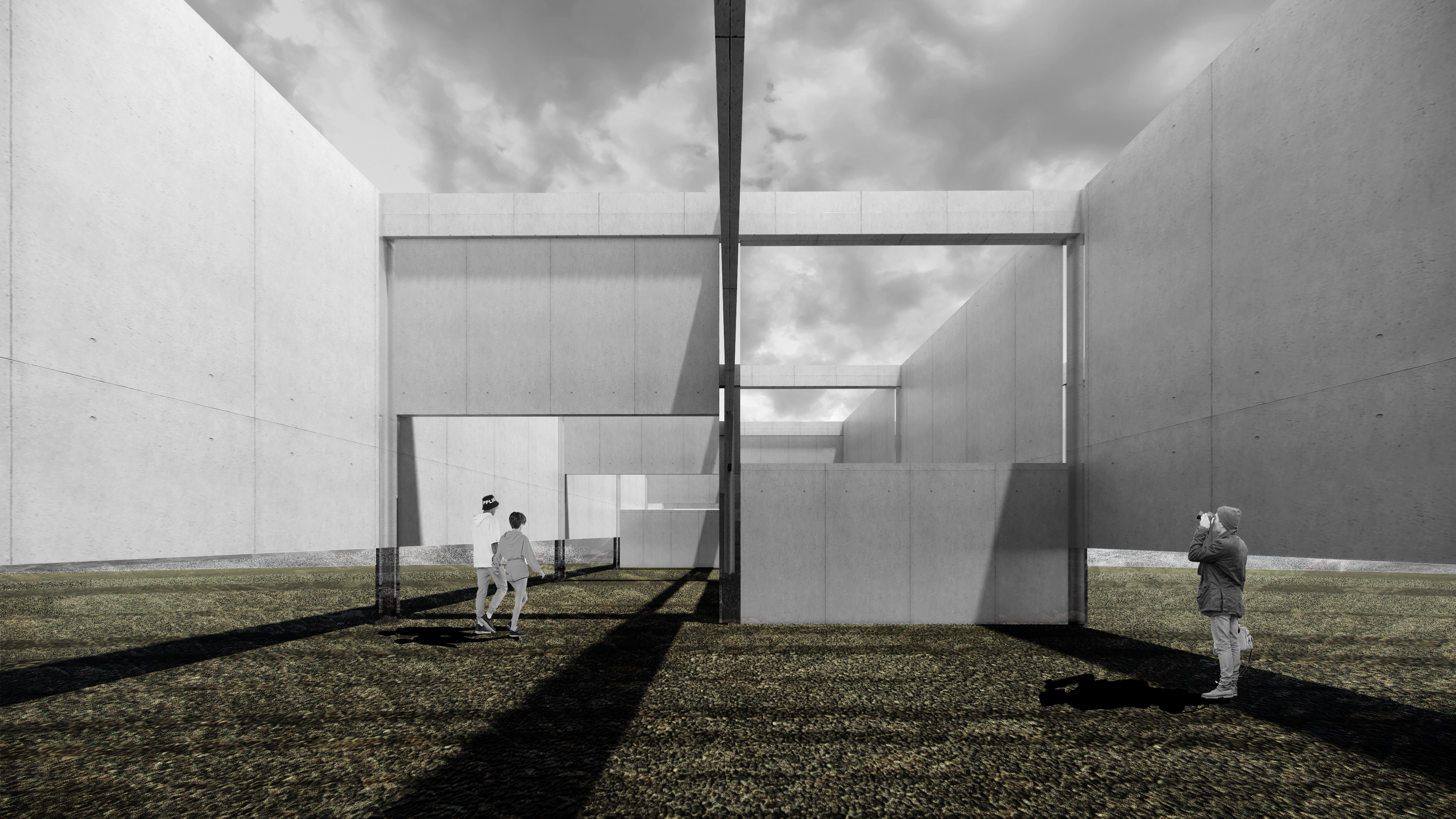Weathering with Us — 2020
Conversations around climate change are often highly pessimistic, with new scientific data leading to despair and defeatism. There is an urgent need for symbols of repair and healing to replace these familiar narratives, which can stand in the way of meaningful climate action.
The museum functions as a huge, rotating sand ‘clock’, with a mechanical armature that etches patterns onto a circular sandy landscape. The sand is ground olivine, a green volcanic mineral that is found abundantly in the Earth’s subsurface. When seawater meets olivine, a chemical reaction occurs that pulls carbon dioxide out of the air and the carbon finds its way to the bottom of the sea as the shells and backbones of molluscs and corals, stored as carbon deposits. This process, mineral weathering, constitutes one of the Earth’s natural mechanism to regulate its carbon level and functions as an important carbon sink.
The ‘hand’ of the clock, the armature, spans the diameter of the circular sand-scape. Half of the armature houses the programmatic functions of the museum: galleries, research centres and a café. The other half contains the kinetic mechanisms that engrave the sand: a maze of walls that actuates up and down, etching the ground when the walls interface the sand. The configuration of the walls depends on the pattern being plotted at that particular moment, determining the vertical positions of the walls. As the armature sweeps across the landscape, sand flows in and out of the floor, slowly. The experience of walking through this perpetually shifting (albeit very slowly) sand-filled maze is a contemplative one, as visitors weave around the walls, watching as the sand trickles by on the ground.
The site of the museum is where the Equator intersects the Prime Meridian, at the coordinates 0,0 (longitude and latitude of zero), a place fictitiously referred to as Null Island. Interestingly, due to errors in geocoding programmes, information is often erroneously mapped to this null coordinate. The site is a virtual gathering place where data tends to flow. It seems apt, then, to situate the museum as a data collection point here, out in the sea, belonging to no particular state. As a floating barge, seawater ebbs in and out of the sand-scape, reacting with the olivine sand to capture carbon out of the air and eroding the patterns away during high tides; the waves themselves contributing to the generative mandala.
In popular culture, our collective understanding of climate change is often represented by the Doomsday clock. What if, instead, we have a shared emblem that
functions not as a harbinger of doom, but of healing?
In Collaboration with Isabella Ong
Finalist Entry for Reimagining Museums for Climate Action



